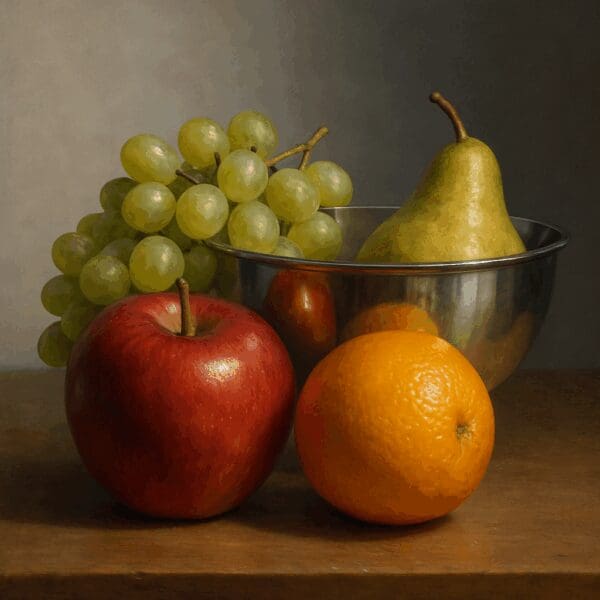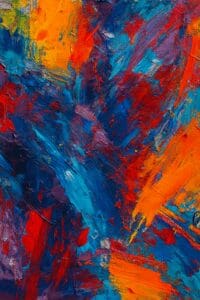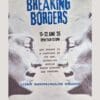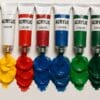Photorealism – A Beginner’s Guide

Introduction: The Art of Painting Reality
In a world saturated by digital imagery, the ability to recreate the real with striking accuracy continues to captivate artists and viewers alike. Photorealism, an art form that blurs the line between photography and painting, offers a unique challenge and reward for those who practice it. For beginners, this genre becomes more than just a technical exercise — it becomes a discipline in seeing, interpreting, and translating reality with extraordinary detail.
A Brief History of Photorealism
Photorealism emerged in the United States during the late 1960s as a direct response to Abstract Expressionism and the rising dominance of photography in visual culture. Artists like Chuck Close, Richard Estes, Audrey Flack, and Ralph Goings led the way, using photographs as references to create works that rivalled the clarity and detail of the camera.
This movement was not merely about mimicking photos — it was about elevating the ordinary and showcasing everyday scenes in new and contemplative ways. Urban storefronts, chrome reflections, and intimate still life arrangements became the subjects through which reality was magnified and reframed.
Why Photorealism Still Matters
At its core, photorealism demands attention — from both the artist and the viewer. In an age of instant images, photorealism slows us down. It invites us to look closely, to appreciate texture, reflection, and nuance.
For the beginner, photorealism offers rigorous training in observation, proportion, and technique. It builds foundational skills that are transferable to all areas of art, including portraiture, still life, digital illustration, and even abstract work.
Getting Started: Choosing the Right Subject
Photorealism doesn’t demand grand subjects. In fact, starting small is often best. A single piece of fruit, a glass jar, or a shiny metal spoon can offer a rich study in surface, shadow, and light.
These everyday objects allow beginners to focus on form and value without the distraction of complex compositions. They’re also ideal for practicing the replication of subtle gradients, reflections, and textural differences.
Essential Tools and Materials
The tools you choose will depend on whether you’re working traditionally or digitally. Both approaches are valid and increasingly complementary in modern practice.
For Traditional Artists:
-
Surfaces: Smooth Bristol board or fine canvas
-
Mediums: Acrylic, oil, or coloured pencils
-
Brushes: Soft, fine-tipped brushes for layering and detail
-
Additional Tools: Rulers, grid overlays, tracing paper, high-resolution photo references
For Digital Artists:
-
Devices: A graphics tablet (e.g., Wacom, iPad with Apple Pencil)
-
Software: Adobe Photoshop, Procreate, Krita
-
Features: Layering tools, grid overlays, custom brushes
Regardless of medium, high-quality reference photos are a must. These provide the necessary visual data for capturing realistic colour, lighting, and form.
Techniques That Build Photorealism
Photorealism is not about copying blindly. It is a strategic interpretation of a photograph using various artistic techniques to achieve a lifelike result.
The Grid Method
One of the most common beginner techniques involves drawing a grid over both the reference image and the drawing surface. This method helps transfer proportions accurately and reduces distortion, especially in portraits and detailed compositions.
Layering and Glazing
In painting, applying translucent layers of colour (glazing) builds up subtle shifts in tone and depth. Acrylic and oil painters often use this technique to achieve the soft transitions characteristic of skin, metal, or glass.
Blending and Edge Control
To achieve a realistic effect, visible brushstrokes must often be eliminated. Soft blending creates smooth transitions, while sharp edges are used strategically to focus attention or define form.
Overcoming Common Challenges
Photorealism is not easy — nor should it be. It’s a demanding style that requires focus and patience. Here are a few common hurdles and how to handle them:
-
Proportions feel “off”: Use the grid method or trace key outlines to gain confidence in placement.
-
The image looks flat: Increase the contrast between light and shadow; add reflected light for more dimensionality.
-
Brush strokes are too visible: Switch to finer brushes and try glazing techniques.
-
Feeling overwhelmed: Break your artwork into smaller areas and set manageable daily goals.
Remember, photorealism is not about perfection — it’s about creating a convincing illusion of reality.
Digital vs. Traditional Approaches
Both traditional and digital methods offer unique strengths. Traditional painting provides tactile satisfaction and produces original physical pieces. Digital tools, on the other hand, offer flexibility — with zooming, layering, and quick corrections that streamline the learning process.
Many artists today combine both: sketching by hand, scanning, then refining digitally — or the reverse. The tools may differ, but the core principles remain the same: keen observation, technical precision, and a disciplined approach to form and lighting.
Learning Resources and Inspiration
Thankfully, there is no shortage of learning material for aspiring photorealist artists. Whether you prefer structured tutorials or self-guided learning, the following resources are excellent starting points:
-
Books: Photorealism by Louis K. Meisel
-
Web: Draw Mix Paint for traditional techniques
-
YouTube: Proko for anatomy and proportion
-
Community: ArtStation for portfolios and inspiration
Studying the works of masters like Chuck Close, Audrey Flack, and Richard Estes can also sharpen your eye and motivate your practice.
Bringing Irish Realism to Life
For Irish artists, photorealism offers a unique opportunity to reimagine our local surroundings — from the glisten of a rain-washed cobblestone street in Galway to the glint of a pint of Guinness on a wooden table. These ordinary moments become extraordinary through the lens of realism.
At Irish Artmart, we encourage artists to explore and exhibit all styles, and photorealism is no exception. It’s a way to share the beauty of our everyday environments with a broader audience and to celebrate the craft of detailed visual storytelling.
Final Thoughts
Photorealism is not for the impatient. But for those willing to slow down, observe closely, and refine their craft, it offers immense satisfaction. The journey from photo to paint is one of precision, focus, and artistry.
As a beginner, your early attempts might feel overwhelming — but each piece, no matter how small, will sharpen your ability to see and interpret the world around you. Whether you continue down the photorealistic path or use it to enhance other styles, the skills you develop will benefit your entire creative journey.
And remember — the real reward isn’t just in the result. It’s in the process of truly seeing.
Explore, experiment, and exhibit your photorealistic work with us on irishartmart.ie. We’re here to support your creative growth every step of the way.
Explore more about painting and creativity at Irish Artmart.
*For collaborations, art features, or inquiries, please contact us at [email protected]. Don’t forget to follow us on Instagram, Facebook, Twitter.
Disclaimer: The views and opinions expressed in this article do not necessarily reflect the official policy or position of Irish Artmart.
Irish Artmart – Your Gateway to Artistic Excellence.


